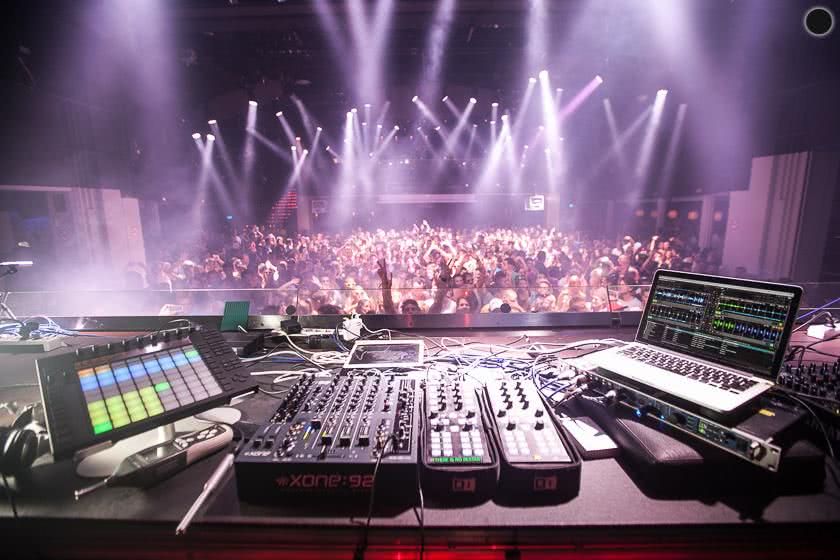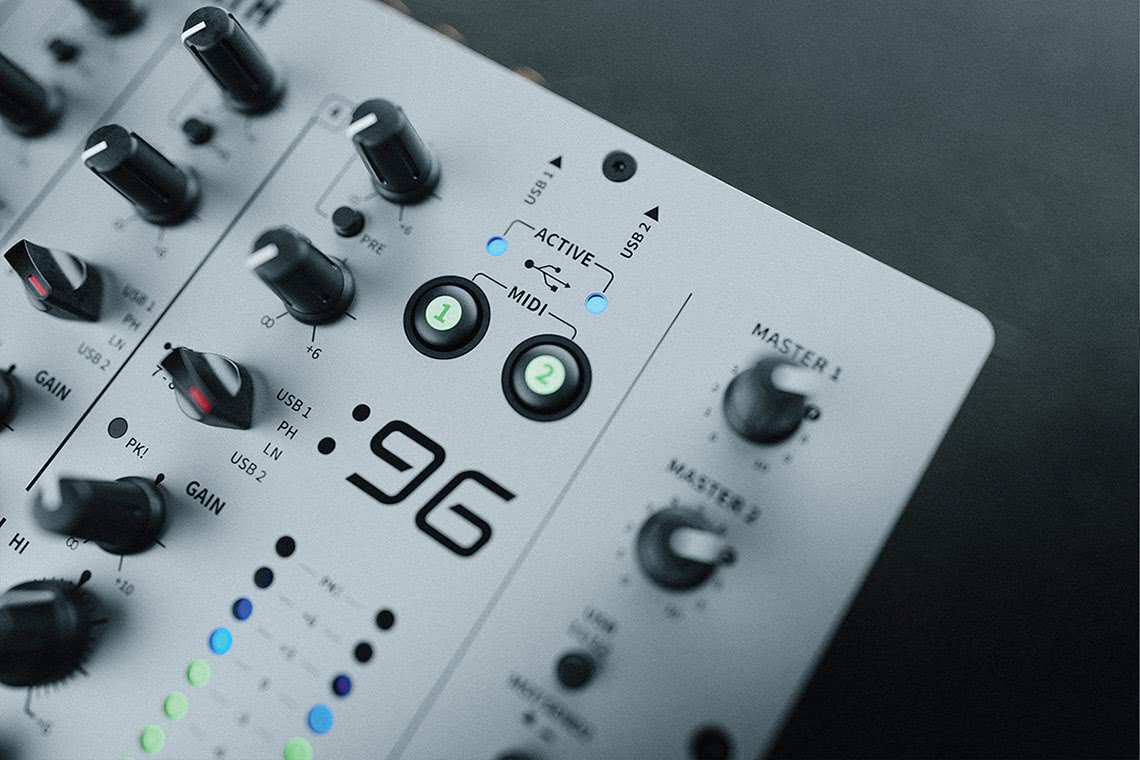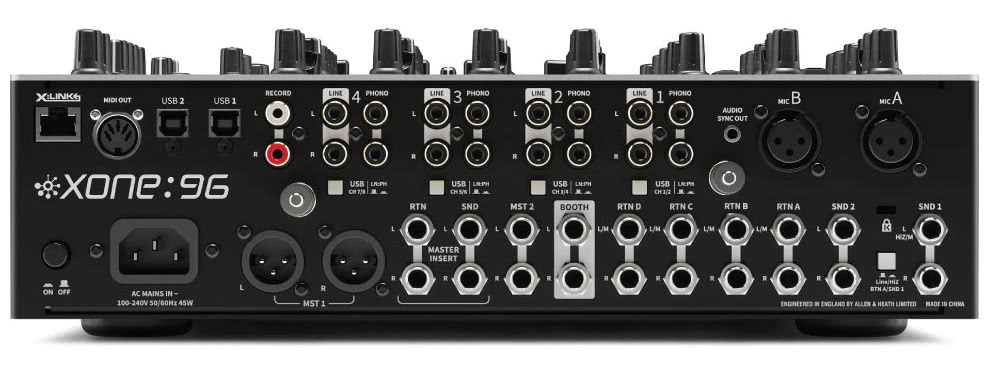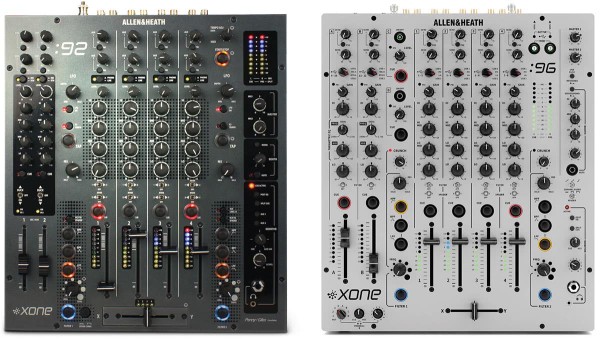Allen & Heath’s Xone series mixers are synonymous with pristine sound quality due to their analogue nature. Even sound engineers from some of the world’s most famous clubs acknowledge that Xone mixers are superior in terms of sound when they are hooked up to large sound systems.
The Xone 92 and the Xone 96 are the premium segment of the current Xone line-up. The 92 dates back to 2003, and it was actually a redesigned Xone 62 as Richie Hawtin suggested to its designers to make it capable of some MIDI control and make two channels suitable for hooking up FX pedals. Adding these minor tweaks to an already fantastic mixer with pure analogue sound made the Xone 92 extremely popular, especially amongst techno DJs, as mixing with software was gaining huge popularity and adding external FX units to your setup became a trend.
The Xone 92 was not only setting a solid ground for more creative and expressive mixing with its 4 band EQ and dedicated FX (Send/Return) channels, it also proved to be a very reliable one, so it quickly became the second choice after Pioneer’s DJM series mixers.
The 92 is still one of the most preferred mixers in DJ booths although it does have some convenience issues, especially because one of its main audience - software DJs - have to carry around their soundcard if they want to use it. Now imagine the hassle when it comes to large events and there is the switch between two DJs, each with its own laptop and many times very different DJ technology, and you do not want the music to stop between the two sets. 20 years ago when DJs were used to carrying around heavy vinyl cases, this was no issue, but today both DJs and stage managers prefer to choose more convenient options as there is more advanced technology available.

Richie Hawtin’s setup before the Model1
If it works don’t touch it!
Apart from the connectivity issue, there are not too many bad things to say about the Xone 92. This is why it was probably harder for the designers to upgrade it than to invent a completely new mixer, but something needed to be done about the lack of USB ports and this is how after 15 years, the Xone 96 was born.
Thankfully they have also corrected some minor issues, which usually were not deal breakers, but were somewhat annoying, like the popping sound when activating one of the two filters, or the huge difference between the levels of PHONO and LINE stages;

The most important extras would be:
- Two USB ports and built-in 24-Channel 32-bit / 96kHz USB sound cards - this finally allows DJs to hook up their laptops with the use of USB cables only. The two ports make it easy to do seamless transitions between sets
- the new CRUNCH feature (and the removal of the LFO), which is actually a harmonic distortion effect that can be assigned to one of the filters
- the BOOTH EQ, which is a very DJ-friendly feature as it can seriously damage your ears if booth monitors are not set up correctly - with the 96, you have the option to correct some of the high/mid/low frequencies
- Parametric EQ on the Send/Return Channels - this is one very cool feature if you are using FX units, as it allows you to cut or boost a specific range between 190 and 2750 Hz, this way you can emphasize some of the most interesting sounds produced by your FX unit, or you can eliminate some unwanted muddiness which is often produced in the midrange
- DUAL CUE system - a wonderful feature for back 2 back sessions, as it allows two DJs to use the cue system independently
- Innofader Crossfader - Xone mixers will always have a bad reputation amongst hip-hop/scratch DJs due to their poor quality crossfaders, but the 96 addresses this issue as well, although it probably still won’t become the no. 1 choice for this purpose
- Upgraded Phono Preamps - you finally don’t have to worry about catching up with the GAIN when you are mixing vinyl with digital files.
- Upgraded Filter System - filter pops and cracks are a thing of the past with the 96
- It is also important to mention that it is larger in size (due to more internals); it is 1.5 cm wider, 6 cm higher, and 2 cm thicker than the 92, this allows a more spacey arrangement of the EQ knobs
Summing these up, anyone could easily come to the conclusion that the Xone 96 is the epitome of Allen & Heath’s legendary DJ mixer series. Yes, it would be wonderful to have some built-in FX, to make it a tough rival for the Pioneer DJM series, but Xone mixers were never too good at this. Even though they made the DB series which had very extensive FX options, it was too complicated for the average user, so they never gained huge popularity and were discontinued.
The upgrades are on point and we think it is more than enough to make it the perfect Xone mixer, especially for clubs, as you can literally connect anything, without any difficulties. This means that you can connect 4 turntables, 4 digital players, 2 laptops, 2 External FX units at the same time, and you can switch between them by simply rotating a knob. Even if you are not mixing with software, you can still use one of the USB ports to record your mixes directly to your computer.

So why are some DJs still holding on to the Xone 92?
As perfect as the 96 gets, you may wonder why didn’t everybody jump to upgrade for the 96, or why is the 92 even manufactured after the appearance of the 96. After using it for a few years since its appearance, and after extensive feedback from our users, we can come up with a couple of reasons for choosing the 92:
- A feel thing. Although you will instantly feel “at home” switching from a 92 to a 96, it will still feel slightly different. Faders on the 96 have more resistance, cue buttons feel less bouncy, and although the larger size 96 allows you to rotate the knobs more comfortably, many DJs have reported that they actually liked the more compact arrangement better. If you have never used a Xone 92, you will most likely never complain about any of these, but long-term users of the 92 can become very attached to its overall feel.
- No intention of mixing with software. If this is the case, there is no significant reason to choose the 96 over the 92. While all the other new features may be useful, they are pretty much expendable for the average user. The only exception would be the more powerful phono preamps on the 96 if you are mixing vinyl with digital files, but in most situations the 92 will still stand up to the task, and maybe the dual cue system if you are a DJ duo, or regularly play back 2 back.
- The test of time. Although the 96 is meant to be bulletproof like its older brother, it is still a fairly new mixer on the market, with different technology and more internals, which means more things can go wrong. Luckily there were no serious issues reported so far, but it still doesn’t have a history of nearly 20 years of heavy club use. We do not think this should be a concern, it should rather encourage people to trust Xone mixers, but there are also a lot of famous DJs, such as Ricardo Villalobos or Sven Väth who are still holding on to the 92, and this inevitably results in some additional popularity.
In short, Xone 96 is recommended for:
- Anyone who mixes using a laptop/computer
- Club owners and event planners who regularly invite DJs who use different kinds of methods to play, as the 96 can handle nearly every needs
- Anyone who wants future-proof technology
- DJ duos, or those who do regular B2B sessions
Xone 92 is recommended if:
- You never intend to use software and want to get away at a lower price point
No matter what your weapon of choice is, you can rest assured that both mixers have the high-standard analogue sound as we would expect from Allen & Heath, and they are built like thanks, so reliability should be no issue.



